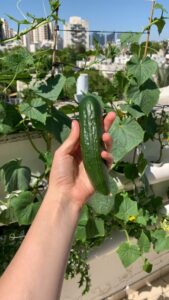Hydroponics is a great way to grow plants without soil, using a nutrient-rich water solution instead. Since this water nutrient solution is the lifeblood of a hydroponic system, having the right water pump is crucial for maintaining the proper flow of water, nutrients, and oxygen to your plant’s roots.
But how do you know what size water pump you need for your hydroponics? In this article, we will explain the factors that affect the water pump size, such as the type of hydroponic system, the number of plants, the flow rate and the head height. We will also give you some tips on how to choose the best water pump for your hydroponic needs.
By understanding the significance of the water pump’s size and how it impacts your hydroponics performance, you can ensure healthy and thriving plants while maximizing the efficiency of your setup. So, let’s dive in and discover the ins and outs of choosing the right size water pump for your hydroponics endeavors.

Understanding Water Pump Basics
Water pumps are essential components in hydroponics, responsible for circulating and delivering nutrient-rich water to plants. There are several types of water pumps used in hydroponics, each with its own advantages and suitable applications. Here are the main types:
Submersible Pumps
These pumps are designed to be submerged directly in the water, usually in a reservoir or nutrient solution. They are versatile and commonly used in hydroponics due to their ease of installation and quiet operation. Submersible pumps come in various sizes and flow rates to accommodate different system sizes and needs.
Advantages: Easy to install, quiet operation, suitable for small to medium systems.
Applications: Drip systems, flood and drain systems, deep water culture (DWC), aeroponics.
Inline Water Pumps
Inline pumps are installed outside the water reservoir and connected to the system via tubing. They are more powerful and are often used in larger hydroponic setups that require higher flow rates.
Advantages: Higher flow rates, suitable for larger systems, less heat transfer to water.
Applications: Larger flood and drain systems, nutrient film technique (NFT), recirculating DWC.
Air Pumps
While primarily used for aeration, an air pump can also play a role in hydroponics. Oxygen-rich water is essential for root health, and air stones or diffusers connected to air pumps can enhance oxygenation in nutrient solutions.
Advantages: Improved oxygen levels, suitable for deep water culture (DWC), aeroponics.
Applications: Systems requiring high oxygenation of nutrient solutions.
Peristaltic Pumps
Peristaltic pumps use rollers to compress tubing, creating a flow of liquid. They offer precise control over flow rates and are commonly used for dosing nutrients, pH adjusters, or other additives.
Advantages: Accurate dosing, minimal risk of cross-contamination, precise control.
Applications: Automated nutrient dosing, pH adjustment, adding supplements.
Sump Pumps
Sump pumps are powerful pumps used in larger hydroponic systems or outdoor setups. They are designed to handle larger volumes of water and are often used in systems with substantial water movement requirements.
Advantages: High flow rates, suitable for outdoor and large systems.
Applications: Outdoor hydroponics, aquaponics, larger flood and drain systems.
Mag Drive Pumps
Magnetic drive (mag drive) pumps use a magnetically driven impeller to create water movement. They are known for their energy efficiency and low heat transfer to the water.
Advantages: Energy-efficient, low heat transfer.
Applications: Smaller to medium-sized systems, systems with temperature-sensitive plants.

How a Hydroponic Water Pump Works
In hydroponics, a water pump is an essential component that facilitates the circulation of water and nutrients throughout the system. The primary function of a water pump is to create a flow of water, delivering it to the roots of the plants in a controlled manner.
Typically, the water pump is submerged in a reservoir or placed outside the system, drawing water from the reservoir and pushing it through various channels or tubes. This continuous circulation ensures that the plants receive a steady water supply and nutrients, promoting their growth and development.

Why Do You Need Water Pumps for Your System?
Water pumps are essential components in hydroponics for several critical reasons:
Nutrient circulation – Water pumps ensure the constant circulation of nutrient-rich water throughout the hydroponic systems. This prevents stagnant water and gives plants a steady supply of essential nutrients.
Even nutrient distribution – Pumps help distribute nutrients evenly to all plants, preventing nutrient imbalances and ensuring consistent growth and health across the entire crop.
Oxygenation – Pumping water introduces oxygen into the nutrient solution, promoting healthy root growth. Well-oxygenated roots absorb nutrients more efficiently and are less prone to issues like root rot.
Prevention of algae growth – Continuous water circulation reduces the likelihood of algae growth in the system by preventing the buildup of stagnant water, which can block light and nutrients from reaching the plants.
Promotes root health – Proper water movement and circulation discourage the development of harmful anaerobic conditions that could harm plant roots.
Temperature regulation – Pumped water can help regulate the temperature of the hydroponic solution, ensuring it remains within an optimal range for plant growth.
Efficiency – Pumps automate the process of nutrient delivery, reducing the need for manual intervention and ensuring plants receive nutrients consistently.
Scalability – In larger hydroponic setups, pumps efficiently manage nutrient distribution, making it possible to scale up production without sacrificing plant health.
Precision – In systems using automated dosing or pH adjustment, pumps ensure accurate and consistent delivery of additives.
Overall, water pumps are fundamental in maintaining optimal growing conditions and promoting healthy plant growth in hydroponics. They ensure a consistent supply of nutrients and oxygen to the roots, helping you achieve higher yields and better crop quality.
Factors to Consider When Choosing a Water Pump for Hydroponics

Flow rate requirements
The rate of flow of a pump is measured in gallons per hour (GPH). Determining the desired flow rate is crucial as it affects the amount of water delivered to the plants. The flow rate depends on factors such as the number of plants, the size of the system, and the specific nutrient requirements of the plants.
Choose a pump with a flow rate that matches your system’s size and the specific hydroponic technique you’re using. A pump with a flow rate that’s too low can lead to uneven nutrient distribution, while one that’s too high can cause overflow and nutrient waste.
Head height considerations
Head height refers to the vertical distance the pump needs to lift water throughout the system. Having a pump that can handle the required head height is important, as this affects the pressure and flow rate of the water reaching the plants.
Consider the vertical lift and horizontal distance the water needs to travel to reach all parts of your system. With this in mind, pick a pump with sufficient head height capabilities to meet these requirements.
Energy efficiency
Opt for a low-wattage and energy-efficient water pump to reduce electricity consumption and minimize operating costs. To find an energy-efficient water pump, look for pumps with lower wattage ratings, high Energy Efficiency Ratio (EER) values, and labels such as ENERGY STAR. Read product specifications and reviews to ensure the pump provides efficient performance while consuming less electricity.

Type of hydroponic system
Different hydroponic set ups have varying water circulation requirements. Consider the specific needs of your chosen system, whether it’s drip irrigation, NFT, flood and drain, or others.
Noise level
Depending on the location of your hydroponic systems, noise levels may be a factor to consider. If you have your system indoors or in a noise-sensitive environment, selecting a water pump with low noise output can be beneficial.
Durability and reliability
Choose pumps from reputable brands known for their durability and reliability. Hydroponic set ups run continuously, so you need a pump that can withstand constant use.
Nutrient solution and water temperature
The water temperature in your system can impact the efficiency of the pump. Some pumps might be better suited for colder water temperatures, while others are designed for warmer conditions.
Installation and maintenance
Choose a pump that’s easy to install and maintain. Look for models with accessible components and clear instructions.
Cost
Cost is an important consideration when choosing a water pump for your hydroponics. While it’s tempting to go for the cheapest option, it’s crucial to strike a balance between affordability and quality. Prioritize performance, reliability, and features over the price alone. Investing in a high-quality pump can pay off in terms of improved plant health and yields but price alone doesn’t guarantee quality.
Additional features
Look for a pump with additional features, such as built-in filters, timers, and adjustable flow rates. This feature allows you to fine-tune nutrient delivery as your plants grow, and their water needs change.
Considering these factors when choosing a water pump for your hydroponic systems will ensure that you select the right pump that meets your specific needs, promotes optimal plant growth, and operates efficiently.

How Big of a Water Pump Do I Need For Hydroponics And How To Know
Properly sizing your water pump is crucial for efficient nutrient delivery and healthy plant growth. Let’s go through the process step by step:
Calculate the required flow rate
To determine the total flow rate required for your system, start by:
Determining the total volume of your hydroponics system. Measure the size of the reservoir or calculate the combined volume of all grow beds or channels.
Decide on the desired number of nutrient solution changes per hour. A general guideline is to aim for 2-4 total system volume changes per hour for most crops.
Divide the total system volume by the desired number of solution changes per hour. This will give you the required flow rate in gallons per hour (GPH). For example, if you have a hydroponic system with a total volume of 50 gallons and want to achieve 3 solution changes per hour, the required flow rate would be 50 divided by 3, which equals approximately 16.7 GPH.
Also, consider the specific hydroponic technique you’re using and the number of plants you’re growing. Different systems have different recommended rates.
Flood and Drain (Ebb and Flow system) – Aim for 1 to 2 flood cycles per hour, so calculate the total volume of water needed for each cycle and multiply by the number of cycles.
Nutrient Film Technique (NFT) – Calculate the volume of nutrient solution required to flow through the channels per minute.
Deep Water Culture (DWC) – Determine the volume of water required to maintain the desired water depth and oxygenation.
Consider head height
Head height refers to the vertical distance the water needs to be lifted to reach all parts of your system. This includes both the height the water needs to reach and the horizontal distance it needs to travel. Calculate the total head height based on your setup.
Match pump specifications and factor in a safety margin
Look for water pumps with specifications that match or slightly exceed your calculated flow rate and head height requirements. Pumps usually have flow rate and head height information in their product descriptions.
Choose a pump that can handle your system’s flow rate and head height but with a slightly higher rate of flow than your calculated requirement. This provides a safety margin in case of unexpected system variations or future expansions.
Check manufacturer recommendations
Some hydroponic system manufacturers provide guidelines or recommendations for pump sizes based on the specific system you’re using. Check if your system’s documentation includes pump size recommendations.
Considering these steps should help you determine the appropriate size water pump for your hydroponics setup, select an efficient and cost-effective option, and maintain it properly. Remember, every system is unique, so adapt these guidelines to your specific needs.
Maintenance and Troubleshooting
Proper maintenance and troubleshooting are essential to ensure the optimal performance and longevity of your pump. Here are some tips to help you maintain and troubleshoot your hydroponic water pump:
Maintenance
Regular cleaning: Clean the pump regularly, especially the intake and impeller, to remove any debris or mineral buildup that can obstruct the flow. Use a soft brush or toothbrush to clean hard-to-reach areas.
Check for leaks: Inspect the pump and connections for any signs of leaks. Address any leaks promptly to prevent water damage and maintain the pump’s efficiency.
Lubrication: Some pumps may require lubrication for smooth operation. Consult the manufacturer’s instructions to determine if lubrication is necessary and what type of lubricant to use.
Replace worn parts: Periodically inspect the pump for any worn-out or damaged parts, such as impellers, seals, or O-rings. Replace these parts as needed to maintain optimal pump performance.
Monitor water temperature: Excessive heat can affect the performance of the pump. Ensure that the water temperature remains within the recommended range for your specific pump model.
Troubleshooting
Insufficient flow: If you notice a decrease in rate of flow or insufficient water circulation, check for clogs or blockages in the intake, tubing or impeller. Clean or remove any obstructions that may be hindering the pump’s performance.
Unusual noises: Strange noises coming from the pump can indicate mechanical issues or obstructions. Check for any loose or damaged components and tighten or replace them as necessary.
Power issues: If the pump is not turning on or experiencing intermittent power supply, check the power source, electrical connections, and switches. Ensure that the power supply is stable and that all connections are secure.
Pump vibrations: Excessive vibrations can be caused by an improperly balanced pump or loose mounting. Adjust the pump’s position or secure it properly to reduce vibrations and prevent damage. Inspect for any misalignment or imbalance that might be causing excessive vibration.
Overheating: If the pump is overheating, check for proper ventilation and cooling. Ensure that the pump is not blocked by debris or placed in a confined space that restricts airflow.
If you encounter persistent issues or are unsure about troubleshooting procedures, it is advisable to consult the manufacturer’s manual or seek assistance from a professional hydroponics expert who can provide specific guidance based on your pump model and system setup.
Remember to consult the manufacturer’s user manual or guidelines for specific maintenance and troubleshooting instructions for your pump model. Regular monitoring, proactive maintenance, and prompt troubleshooting will help ensure the optimal performance of your water pump and the overall success of your hydroponic garden.
Conclusion
Determining the right water pump size for your hydroponic system is crucial for its overall efficiency and success. By considering factors such as the total volume of your system, desired solution changes per hour, and the specific requirements of your plants, you can calculate the necessary rate of flow in gallons per hour (GPH). This calculation will guide you in selecting a pump that can adequately circulate and deliver nutrients to your plants.
Remember to regularly maintain your hydroponic water pump by cleaning it, checking for leaks, and replacing worn parts. Troubleshooting any issues that arise, such as insufficient flow or unusual noises, is vital to ensure optimal performance.
By understanding the principles of sizing and maintaining hydroponic water pumps, you are taking a significant step towards creating a thriving hydroponic garden. With the right pump size and proper care, you can enjoy healthy plant growth and maximize the benefits of hydroponics in your gardening journey.






